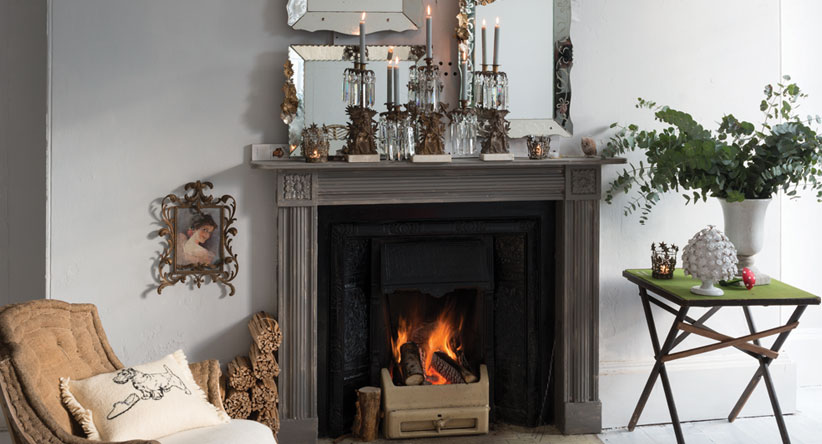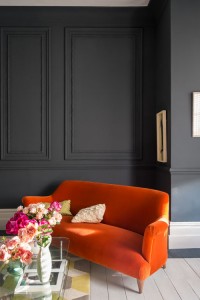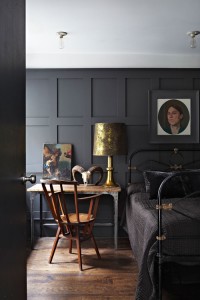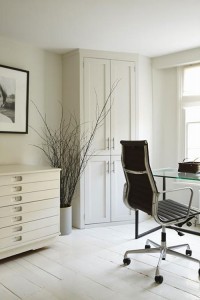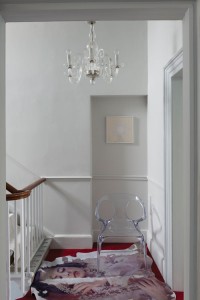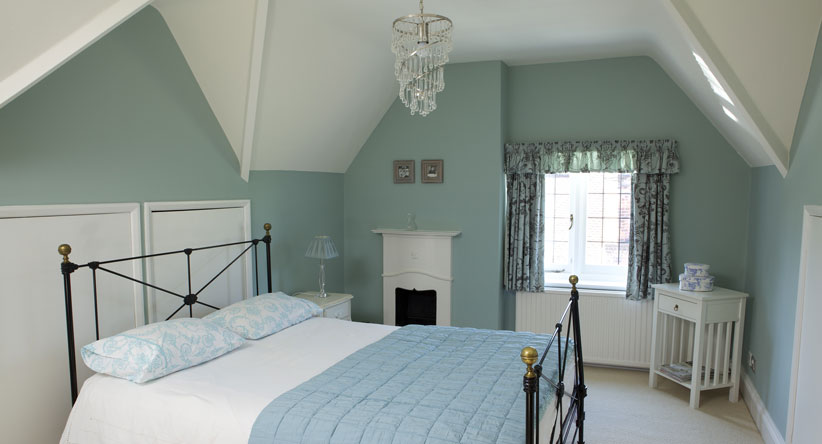Living Room in Dimpse No.277 & All White No.2005 | Estate Emulsion & Estate Eggshell
Light is incredibly important when choosing colour for your room, and you’ll need to consider which direction the room faces and whether it has a lot of natural light.
NATURAL LIGHT
Colour varies according to both the quality and type of natural light and the same colour can often appear quite different from room to room, at different times of the day and even depending on the time of year. This variance is beautiful, but it can add an extra level of complexity to your choice, so to help we’ve given some colour suggestions that will work in each type of room.
NORTH FACING ROOMS
North facing rooms can be challenging to decorate. As light from the north is cooler and harsher, it can be difficult to create the feeling of light and space we so often desire. In small spaces with little natural light the best advice is not to fight nature, instead embrace the darkness and create a dramatic and cocooning interior. Strong colours like Brinjal, Railings or Down Pipe will all create a sense of intimacy in a dark space.
Living rooms with walls in Railings No.31 Estate Emulsion, trim and floor in Strong White No.2001 Estate Eggshell and Floor Paint
Bedroom with walls in Down Pipe No.26 Estate Eggshell and ceiling in Wimborne White No.239 Estate Emulsion
Northern light tends to bring out the cooler tones within a colour, so if you’re using a lighter tone, avoid anything with a green or grey base. Yellow based colours like Yellow Ground, New White and White Tie will help to bounce as much light around the room as possible, as will hanging a mirror to reflect the light you do have in the space.
SOUTH FACING ROOMS
South facing rooms are a joy to decorate – they are full of warm light all day, so all colours will look good! We recommend really maximising the feeling of light and space in south facing rooms by choosing pale tones. Soft blues like Pavilion Blue or Borrowed Light will create a wonderfully watery seaside look, while red-based neutrals like Joa’s White will create a warmer feel. For a contemporary edge, try Dimpse which has cool blue undertones. Use a fairly bright white on the woodwork in south facing rooms for a crisp, fresh look.
WEST & EAST FACING ROOMS
It is useful to consider whether you’ll use an east or west facing room more in the morning or the afternoon, so that you can tailor your colour choice to the type of light you will most often experience. Light in west-facing spaces is cooler in the morning then filled with dramatic light in the afternoon, while east facing rooms are bright in the morning and cooler in the afternoon.
WEST FACING ROOMS
White walls are natural light reflectors and will flatter any colour of furnishing which is often why we choose neutrals for our homes, but white will really enhance both natural and artificial light in West facing rooms. Try Wimborne White or Pointing for an airy feel. Even the greyer neutrals such as Slipper Satin and Ammonite should retain a feeling of light – although the colour will change from morning to evening – cooler earlier and warmer later.
Study with walls, floor and trim in All White No.2005 Estate Emulsion, Estate Eggshell and Floor Paint
Hall with walls and trim in Ammonite No.274 Estate Emulsion and Estate Eggshell
EAST FACING ROOMS
The light in east facing rooms can appear to be a little blue so it is best to work with this and choose greens or blues. To create as much light as possible but still retain some warmth, look at pale duck egg colours like Pale Powder or Teresa’s Green which will really come alive in the morning sunlight. Because the light will change so dramatically through the day it is often good to team these with a darker tone on woodwork or furniture such as Chappell Green or Dix Blue so that the walls appear lighter in contrast. If you want to use a white, choose one with a green or blue base such as James White.
Bedroom in Green Blue No.84 & All White No.2005 | Estate Emulsion
ARTIFICIAL LIGHT
Artificial lighting will also affect how colours can appear in a room as different bulbs have different hues of light. Halogen and incandescent bulbs emit a yellow light that will make colours appear warmer. This is perfect if your scheme uses pretty yellow-based neutrals like White Tie and New White, but may counter the urban look created by greys like Blackened and Dimpse with their bluer undertones. LED lighting emits a bluer light and is more suited to contemporary interiors. Choosing a bulb which emits a white light will make colours appear as close as possible to daylight, so you will see the truest impression of the colour.
When you’ve chosen a colour we recommend painting out a sample pot onto A4 paper or card to see how the colour works in your space, move it around the room and look at the colour at different times of the day so you can see how the colour is affected by the light.

